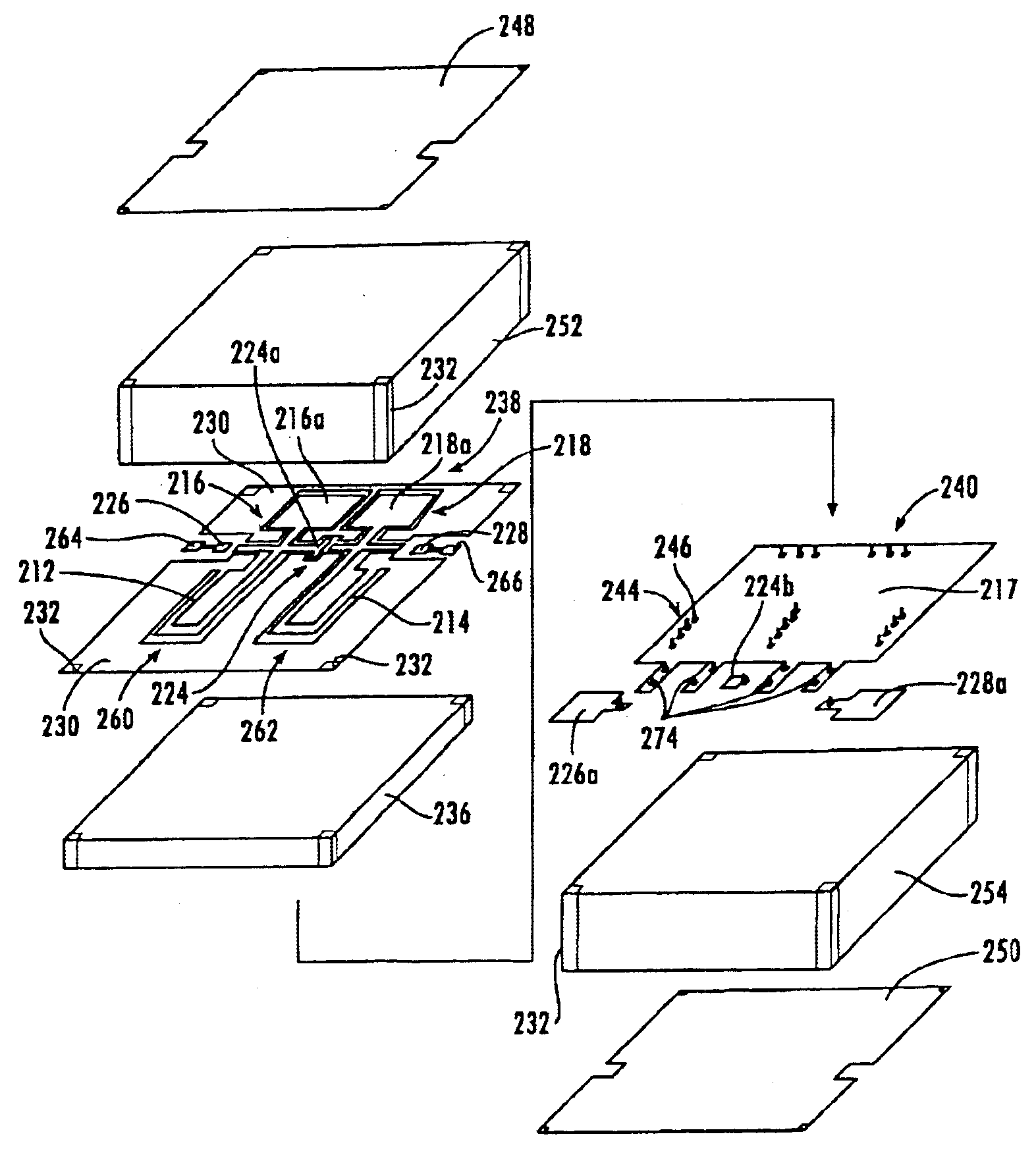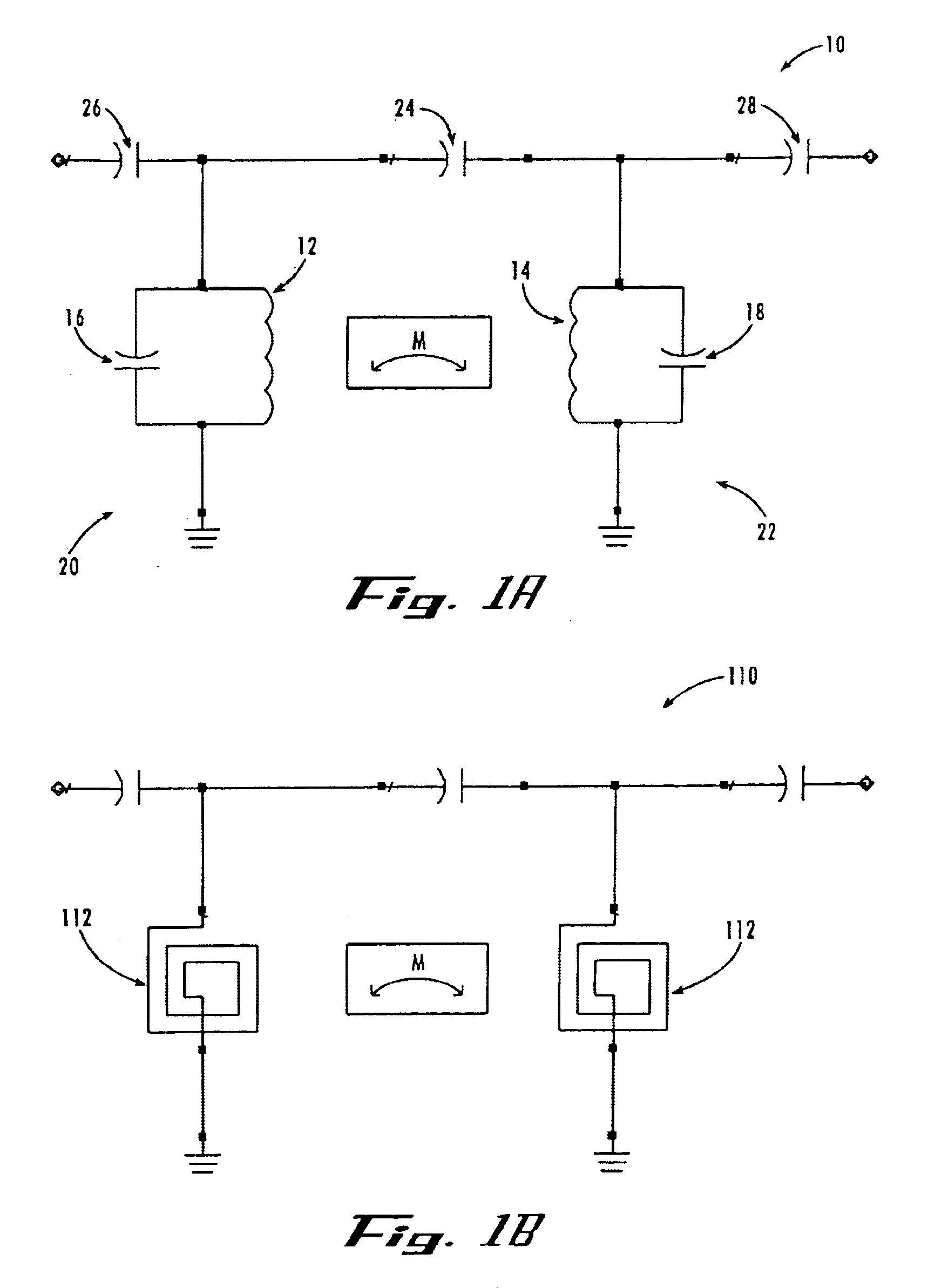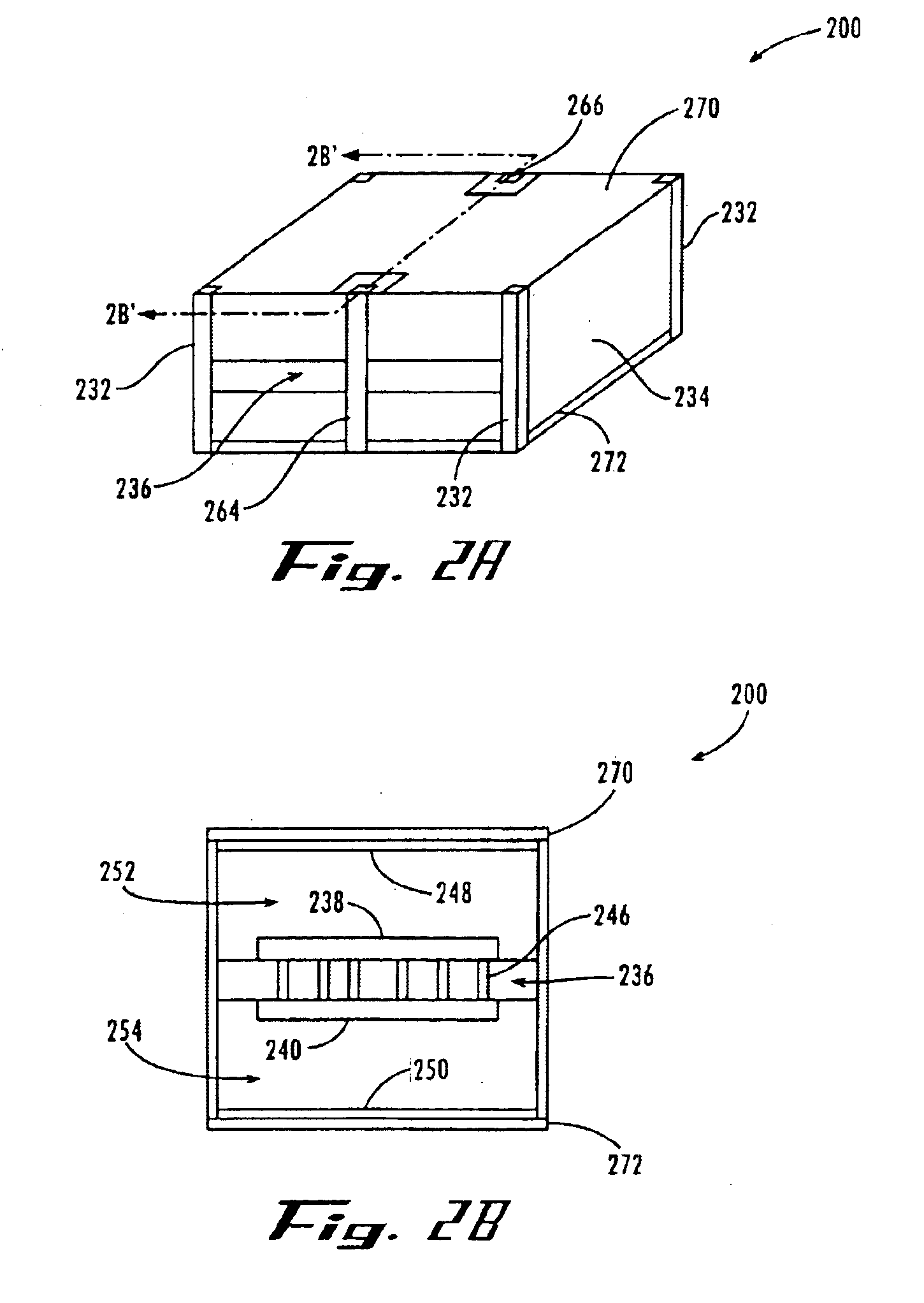Integrated passive devices fabricated utilizing multi-layer, organic laminates
a technology of organic laminates and integrated passive devices, which is applied in the direction of waveguides, parametric amplifiers, waveguide type devices, etc., can solve the problems of high mold cost, rf filter design in most architectures, and low integration rate, and achieve the effect of higher integration
- Summary
- Abstract
- Description
- Claims
- Application Information
AI Technical Summary
Benefits of technology
Problems solved by technology
Method used
Image
Examples
example i
[0074]An X-ray photograph of an organic bandpass filter 500 in accordance with an embodiment of the present invention is provided in FIGS. 7 and 8. The filter 500 comprises shorted hybrid CPW-stripline meander transmission line inductors 512, 514 formed close to each other on a first organic dielectric layer, which is a 50 μm thick layer of LCP, wherein the inductors 512, 514 are directly magnetically coupled to each other. Each inductor is connected to separate parallel plate capacitors 516, 518 by sandwiching the same dielectric sheet. An inter-resonator parallel plate coupling capacitor 524, is formed using two disconnected metal plates that sandwich the same organic dielectric sheet in such a manner that the each plate of the inter-resonator coupling capacitor electrode connects to separate inductors. In addition, a second organic dielectric layer and a third organic dielectric layer sandwich the first organic dielectric layer, and comprise a high frequency hydrocarbon material ...
example ii
[0085]Another organic bandpass filter 600 in accordance with an embodiment of the present invention is shown in the picture of FIG. 10. The filter 600 comprises shorted hybrid CPW-microstrip, meander inductors 612, 614 formed close to each other on a first organic dielectric layer, which is a layer of LCP, directly magnetically coupled to each other. The term “shorted” refers to one end of each inductor connected to the large metallic area, which in this case serves as the in-built shield 630 (also referred to as a coplanar ground ring). In addition, the filter 600 includes an inter-resonator parallel plate coupling capacitor electrode 624 with in-built shield 630 formed using two disconnected metal plates that sandwich the first organic dielectric layer in such a manner that the each plate of the inter-resonator coupling capacitor electrode connects to separate resonators. Yet further, the filter 600 includes a first shield electrode formed respectively on a second organic dielectr...
example iii
[0094]Yet another organic bandpass filter 700 in accordance with an embodiment of the present invention is shown in the picture of FIG. 12. The organic bandpass filter 700 comprises shorted hybrid CPW-microstrip meander inductors formed close to each other on a first organic dielectric substrate, such as epoxy based Vialux by E. I. du Pont de Nemours and Company, directly magnetically coupled to each other. In addition, the third bandpass filter comprises an inter-resonator parallel plate coupling capacitor electrode 724, with ground ring, formed using two disconnected metal plates that sandwich the same organic dielectric sheet in such a manner that the each plate of the inter-resonator coupling capacitor electrode connects to separate resonators.
[0095]The transmission line inductors 712, 714 did not provide the needed capacitance in the desired length. Since the dielectric is lossy for the capacitor application, each is replaced by a separate discrete capacitor 702, such as a chip...
PUM
 Login to View More
Login to View More Abstract
Description
Claims
Application Information
 Login to View More
Login to View More - R&D
- Intellectual Property
- Life Sciences
- Materials
- Tech Scout
- Unparalleled Data Quality
- Higher Quality Content
- 60% Fewer Hallucinations
Browse by: Latest US Patents, China's latest patents, Technical Efficacy Thesaurus, Application Domain, Technology Topic, Popular Technical Reports.
© 2025 PatSnap. All rights reserved.Legal|Privacy policy|Modern Slavery Act Transparency Statement|Sitemap|About US| Contact US: help@patsnap.com



